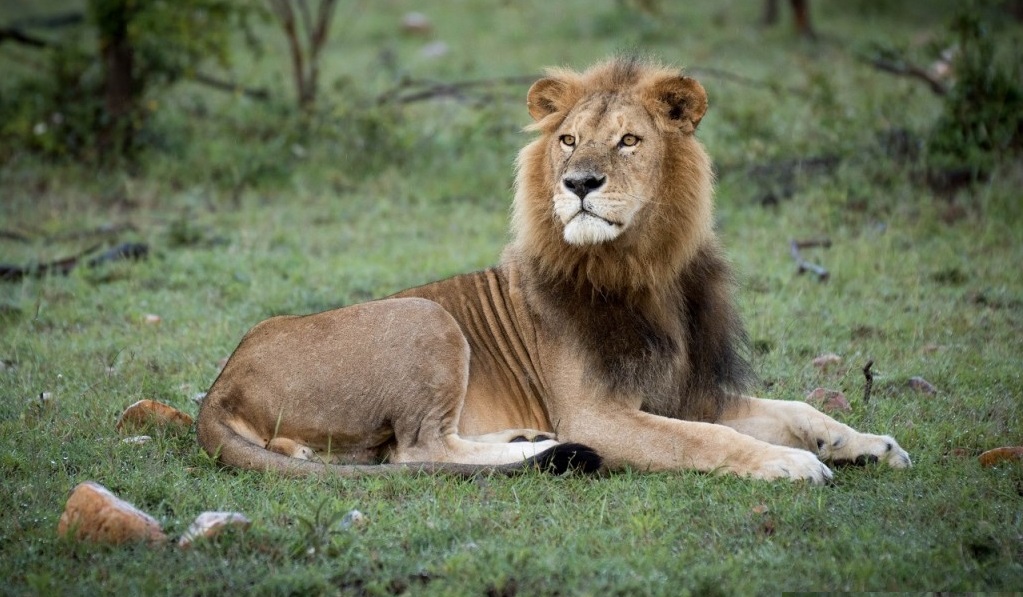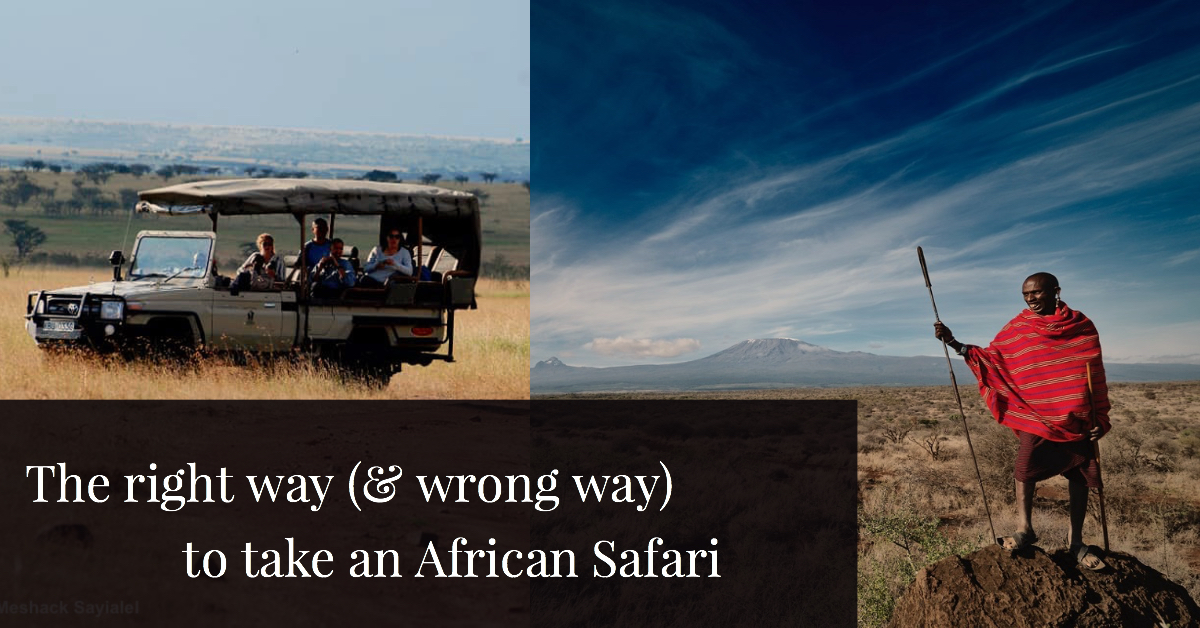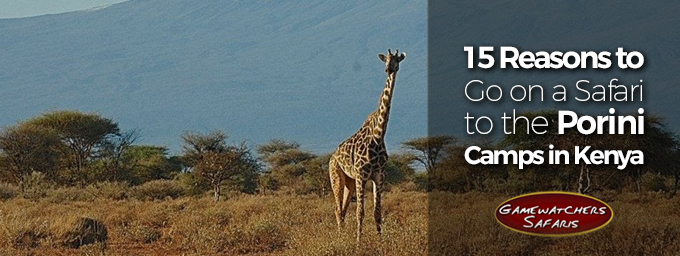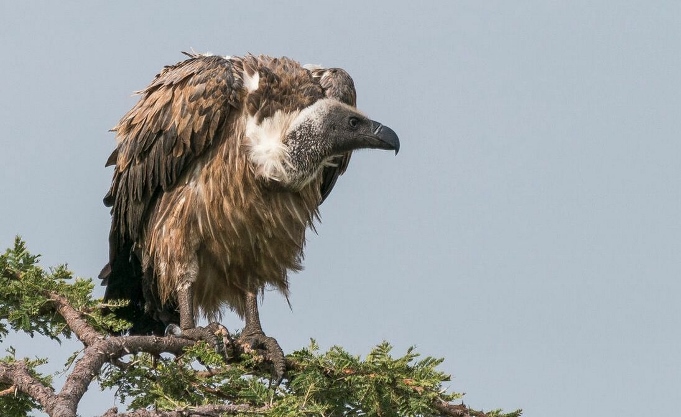
Porini guest Clinton Richardson comes eye to eye with “Figlet”, one of the resident leopards in the area surrounding Porini Lion Camp …
* * * * * * * * * * * * * * * * * * * * * * * *
This series of blogs will take you on Clinton’s safari in Kenya as he travels from Atlanta (USA) to Nairobi National Park, Selenkay Conservancy (Amboseli), Ol Pejeta Conservancy (Laikipia) and Olare Motorogi Conservancy (Maasai Mara). Let’s join him on his journey as he shares his insights into the conservancies, Porini Camps and the people (and animals!) that he meets along the way. All images are from Clinton’s TrekPic.com photo site. Blog entries are from his Venture Moola blog at ReadJanus.com.
* * * * * * * * * * * * * * * * * * * * * * * *
Our first pass at spotting a leopard, you may remember, was when we returned to Porini Rhino Camp after sunset one evening. During the drive back, we noticed the heads of four Giraffe all intently looking in the same direction at something ahead of us. It was getting dark and I was in a back seat. Our driver pulled out a bright spotting lamp and pointed it into the bush.
Just moments later our spotter saw the leopard in front of us. Within seconds the leopard bolted into the bush and disappeared into the darkness. I missed it entirely and wondered if we would get another chance to spot this elusive animal.
Our first game drive at Porini Lion Camp answered my question. We were already having a good day when our driver headed out of the grassland toward the bush. He was heading to an area where leopard had been previously spotted.
We drove for some time until another nearby driver spotted something. The young leopard Figlet was in the bush near the stream we were canvasing. We drove over to join the other vehicle and surveyed the area.
Not knowing if we would succeed and expecting it would not be a long viewing if the leopard was moving in the bush, I readied my camera for shooting into the bush with a long 400 mm lens, a fast ISO speed, continuous shooting mode and auto focus settings. I was expecting lower light shooting into the bush and knew the faster ISO speed would give me slower shutter speeds to complement using a longer lens.
When we reached the bush where the other driver was waiting, it did not look promising. We found heavy bushes in front of a meandering stream with a deep bank. There were lots of directions the cat could go without our seeing her.
Our driver pulled away from the other vehicle and parked us in front of a spot where a small opening let you look back into the brush. No one could see a cat.
I secured my camera to my wrist, adjusted the viewing screen on the back so I could look down and see what the camera saw and lowered the camera as far as I could over the side of our vehicle, pointed into the opening. If the cat appeared the photos would be from her eye level.
We sat with me leaning over the edge of the vehicle and our guides a bit nervous about my posture. “No one is getting out to retrieve your camera if it falls,” they politely pointed out.
We waited quietly. Nothing happened.
And, then there was movement in the bush. As I watched, the head of the leopard moved through the bush into the back of the opening my camera was watching. I hit the shutter button and the camera took a dozen pictures in quick succession.
She was gone as quickly as she appeared but the thrill of seeing her remained. As did her image. The autofocus worked imperfectly under these challenging conditions but did manage to focus on Figlet often enough to generate a some great images. The one below shows her just as she appears in the opening in the bush.
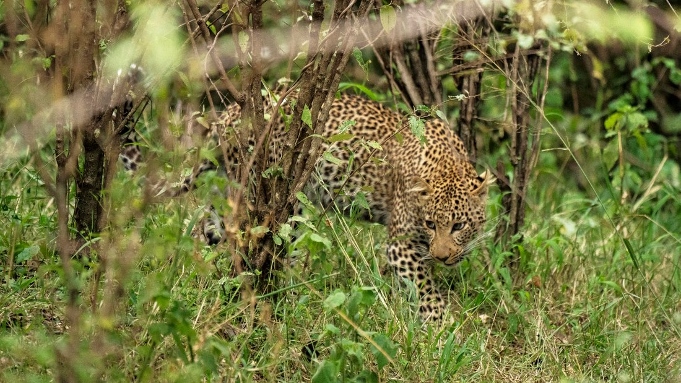
Figlet in the Bush
We had seen the elusive leopard on her home turf and captured her image as she warily moved near the river bank. It was a great moment and one we did not expect to replicate.
A couple of days later, however, our guides started our morning drive looking for Figlet again. She had been spotted outside the conservancy (meaning there could be more vehicles following her) in a tree near a stream.
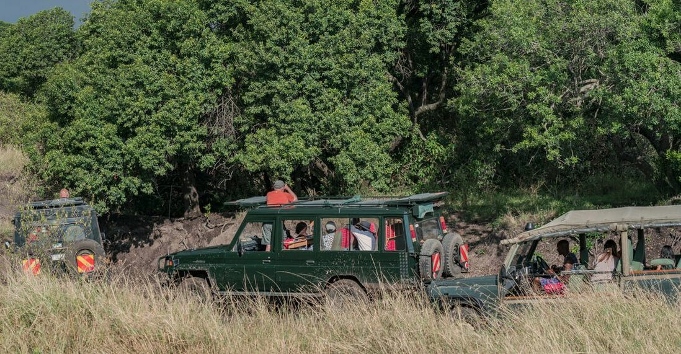
Lost in the Tree: Outfitters Looking for Figlet
What outed her was the carcass of an animal she had killed the night before. It was in the high grass near the tree where the other drivers said she was hidden. You can see our approach to the area in the image above with the safari vehicles around a tree.
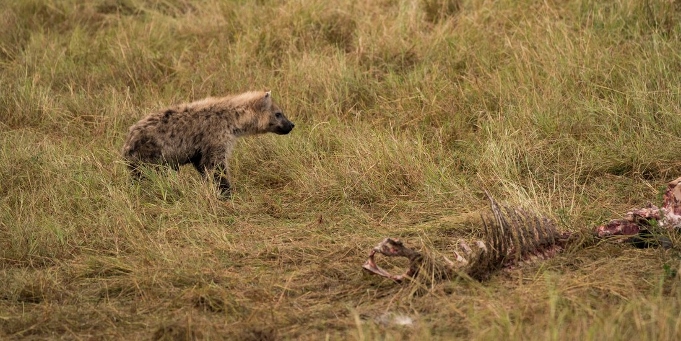
Figlet’s Kill and Young Hyena
We stayed awhile but there was no cat to see. So, we drove through the grass near the stream, passing the carcass and a pair of opportunistic hyena. We followed the stream long enough to spot several Dik-dik (small antelopes a bit larger than the Suni we saw in Nairobi National Park) but found no leopard.
Our driver got back on the radio and then backtracked to approach the original site from another direction. There were still a few vehicles at the site but they were beginning to move on.
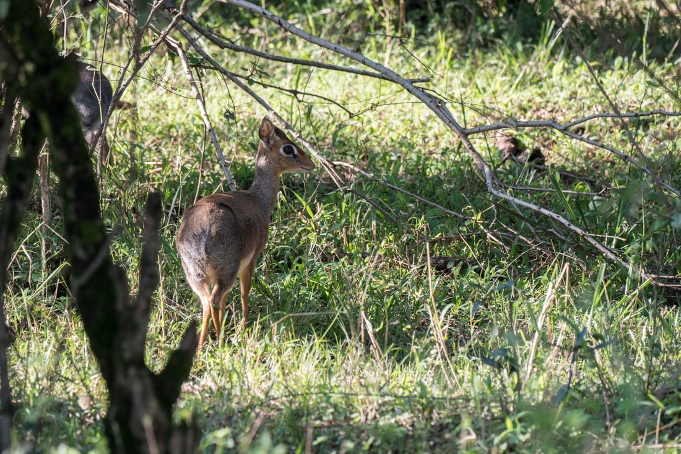
The Dik-dik
So we moved too, driving near the stream in hopes of catching another glance of the leopard. From the radio conversation (in Swahili) our driver knew we were close when he pulled up close to the stream to watch. Another vehicle pulled up behind us along the stream bed and Figlet moved away from the vehicle along the edge of the bush giving us this spectacular view.
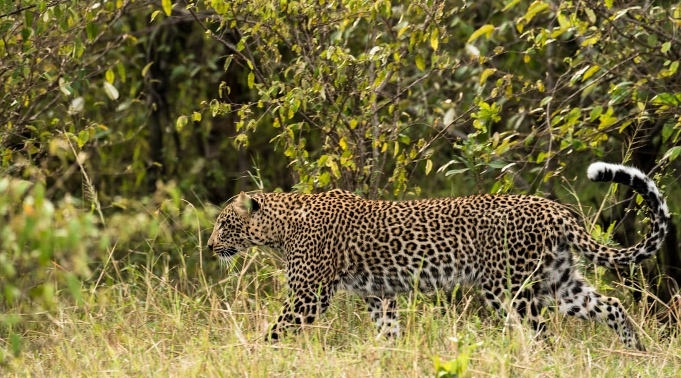
Figlet Profile
Our driver pulled our Land Cruiser ahead in the direction Figlet was moving. Another vehicle arrived. Figlet kept walking in the bush and then turned and walked out of the bush in our direction.
Not the least bit intimidated by us or our vehicles, she walked leisurely up to our vehicle and stopped long enough to look at me and the long lens of my camera. She was less than two feet from the vehicle.
I pushed the camera shutter to capture the large aqua marine eyes that mesmerized us all. I also felt my heart race a bit as her eyes caught mine and she stopped.
She was so close. And as she fixed her gaze in my direction, I felt vulnerable. Pulse beating vulnerable. If only for a moment (she moved on), I feared she might jump into the vehicle. The thought and my racing heart resulted in a fuzzy close-up of her magnificent eyes.
Fortunately, I was able to catch them in a longer distance shot when my hands were steady. Here is Figlet’s close up.
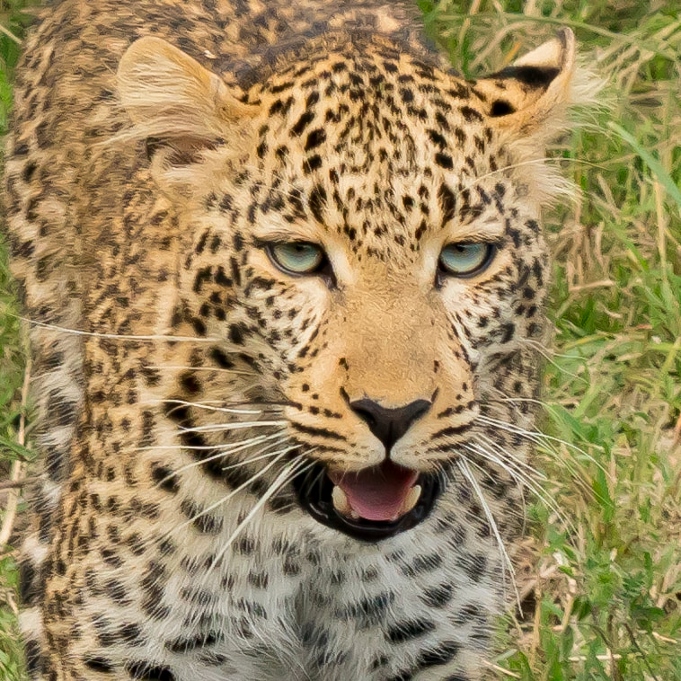
Eyes on You
Once she walked off, we left as well. It was time for a bush breakfast. We drove to a more open spot and had a breakfast prepared earlier at our camp on a table and chairs set up next to our vehicle. Within a few feet of our table were hippo tracks in the mud. A great breakfast as usual and we still had the rest of the morning drive to look forward.
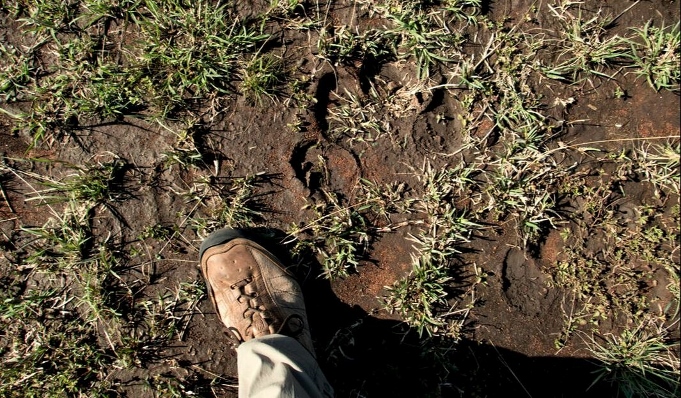
Hippo Tracks – African Big Foot
First published 21 Mar 2019. All photos and text are © Clinton Richardson. All images are from his galleries at TrekPic.com
About Clinton Richardson
Clinton Richardson has been writing and taking photographs for decades. His books include the critically acclaimed 5th edition Richardson’s Growth Company Guide 5.0 and the award-winning book about social media and ancient coins called Ancient Selfies. His images, including images taken on his trip, can be viewed at TrekPic.com. His Venture Moola blog can be viewed at Readjanus.com.
See Other Blogs in this Series:
- Safari Countdown: Prepping for Kenya
- Safari 1: The Hunt
- Safari 2: Off to Nairobi
- Safari 3: Tented Camps & Conservancies
- Safari 4: Passports in His Underpants
- Safari 5: Night Lions to Amboseli
- Safari 6: Amboseli to Selenkay
- Safari 7: Pooh on You
- Safari 8: Eaten by a Lion?
- Safari 9: The Maasai
- Safari 10: On the Move
- Safari 11: Crash on the Grass
- Safari 12: Sundowner Surprise
- Safari 13: Stalag Panzee
- Safari 14: Bump in the Night
- Safari 15: Dry Season Showers
- Safari 16: How Many Wives Would You Like to Have?
- Safari 17: Distracting His Highness
- Safari 18: How to Eat a Tree
- Safari 19: Hunting with Children
- Safari 20: Blue Jean Symphony
- Safari 21: African Nights
- Safari 22: Dinosaurs on the Wing
- Safari 23: All Gnu but One
on Thursday 21st March 2019 at 07:11



